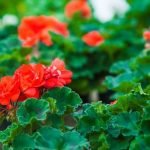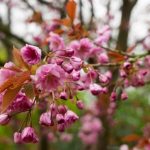Are you looking for landscaping ideas for small gardens? With limited space, it can be challenging to create a beautiful and functional outdoor area.
However, with the right design principles and plant selections, you can transform your compact garden into a stunning oasis. In this article, we will explore various strategies for maximizing space, choosing the right plants, creating illusions of space, incorporating functional elements, using color and texture, enhancing with lighting and decor, and providing maintenance tips for small garden landscaping.
When it comes to landscaping for small gardens, there are several key considerations that can make a big difference in the overall design. By utilizing vertical elements such as trellises, hanging planters, and vertical gardens, you can maximize your space and create visual interest. Additionally, choosing the right plants is crucial for small gardens – low-maintenance options that thrive in compact spaces are ideal.
In addition to plants, design tricks such as creating focal points, using mirrors to reflect light and create depth, and strategic placement of pathways and patio areas can help to create the illusion of more space in a small garden. By incorporating functional elements like seating areas and pathways, you can enhance the usability of your outdoor space.
And finally, paying attention to color schemes and textures in your plant varieties can add depth and visual interest to your small garden landscape.
Maximizing Space
When it comes to landscaping ideas for small gardens, maximizing space is essential. One of the most effective ways to do this is by utilizing vertical elements in your garden design. Vertical gardening not only helps save space but also adds visual interest and provides opportunities for creative expression.
One popular way to incorporate vertical elements is by using trellises or arbors for climbing plants such as vines, ivy, or climbing roses. These plants not only add a touch of natural beauty but also help create privacy and shade in small garden spaces. Hanging planters and wall-mounted containers are also great options for adding greenery without taking up valuable floor space.
In addition to plants, vertical structures such as shelves, wall-mounted herb gardens, or even a living wall can be used to maximize space in small gardens. These elements not only add functionality but also create a unique aesthetic that can make your small garden feel more spacious and visually appealing.
Another way to utilize vertical space in small gardens is by incorporating bird feeders, hanging lanterns, or decorative outdoor artwork on walls or fences. These additions not only add charm and character but also draw the eye upward, creating the illusion of height and openness in a confined outdoor area.
| Vertical Elements | Description |
|---|---|
| Trellises and Arbors | Support climbing plants, add privacy and shade |
| Hanging Planters and Wall-Mounted Containers | Add greenery without taking up floor space |
| Shelves, Herb Gardens, Living Walls | Maximize space while adding functionality and aesthetics |
| Bird Feeders, Hanging Lanterns, Outdoor Artwork |
Choosing the Right Plants for Small Gardens
When it comes to landscaping ideas for small gardens, choosing the right plants is crucial in making the most out of limited space. Low-maintenance plant options are ideal for small gardens as they require minimal care while still providing visual appeal. In a small garden, you want to make sure that your plants can thrive without taking up too much of your time and effort.
One great option for low-maintenance plants in small gardens is native plants. Native plants are already well-adapted to the local climate and soil conditions, making them easier to care for compared to non-native species. They also attract local wildlife such as birds and butterflies, adding another layer of interest to your garden.
Another low-maintenance plant option for small gardens is ornamental grasses. These grasses require minimal watering and upkeep, yet they can add texture and movement to your garden with their graceful foliage and unique seed heads. Additionally, succulents and cacti are excellent choices for small gardens due to their ability to store water, making them resilient in dry conditions.
Their striking forms and colors can also make a bold statement in a compact garden space. By choosing low-maintenance plant options, you can create a beautiful and thriving garden with minimal effort, perfect for those with limited time or gardening experience.
Creating Illusions of Space
When working with limited space, it’s important to create the illusion of a larger area in small gardens. One design trick is to use perspective and focal points to draw the eye into the garden and create depth. This can be achieved by placing larger plants or structures at the back of the garden and smaller ones towards the front, giving the impression of distance.
Another effective way to create an illusion of space in a small garden is by using mirrors strategically placed to reflect light and foliage. This not only adds an element of surprise but also creates a sense of expansiveness. Additionally, incorporating winding pathways and curves instead of straight lines can give the impression of a larger area, as it creates a sense of mystery by not revealing everything all at once.
Incorporating different levels in your small garden can also help to create the illusion of space. By adding raised platforms or tiers, you can visually separate areas and make the most out of the vertical space available. This allows for more planting opportunities while providing visual interest and depth.
| Design Trick | Description |
|---|---|
| Use of Mirrors | Strategically placing mirrors to reflect light and foliage creates a sense of expansiveness. |
| Creating Different Levels | Adding raised platforms or tiers visually separates areas, adds planting opportunities, visual interest, and depth. |
| Perspective and Focal Points | Placing larger plants or structures at the back and smaller ones towards the front gives an impression of distance. |
Incorporating Functional Elements
When it comes to landscaping ideas for small gardens, incorporating functional elements is key to making the most out of the limited space available. Here are some tips for adding practical and attractive features to your small garden:
- Patio: Creating a patio area in your small garden can provide a designated space for outdoor dining, entertaining, or simply relaxing. Consider using materials such as pavers, stone, or wood decking to define the patio area and make it visually appealing.
- Pathways: Installing pathways in your small garden not only serves a practical purpose by guiding visitors through the space but can also add visual interest. Use materials that complement your overall design scheme, such as gravel, stepping stones, or brick pavers.
- Outdoor Furniture: Selecting the right outdoor furniture is essential for making your small garden comfortable and inviting. Look for pieces that are appropriately scaled for the space and consider multi-functional options like foldable chairs or benches with built-in storage.
Incorporating these functional elements into your small garden landscaping will help to maximize usability while adding aesthetic appeal. By carefully selecting materials and furnishings that are appropriate for the size of your garden, you can create a beautiful outdoor retreat that is both stylish and practical.
Color and Texture
When it comes to landscaping ideas for small gardens, one of the most important elements to consider is the use of plant varieties to create visual interest. This involves careful selection of plants that not only fit within the limited space available but also add color and texture to the overall design.
Color Coordination
In a small garden, using color strategically can make a big difference in creating visual appeal. Consider planting flowers and foliage in coordinating or contrasting colors to add vibrancy and depth to the space. For example, using a mix of warm-toned flowers like reds, yellows, and oranges can create a cozy and inviting atmosphere, while cooler tones like blues and purples can evoke a sense of tranquility.
Texture Play
Incorporating different textures into the garden design can also contribute to visual interest. Mix up smooth leaves with rough ones, and integrate soft, billowy flowers with spiky or architectural foliage. This diversity adds dimension and keeps the eye moving throughout the space.
Seasonal Variety
Another way to keep your small garden visually engaging is by planning for seasonal variety. Choose plants that bloom at different times of the year so that there’s always something new and exciting happening in your garden. This will ensure that even in a small space, there’s always something fresh and interesting to look at.
By carefully considering these aspects when selecting plant varieties for your small garden, you can significantly enhance its visual appeal and create an inviting outdoor oasis despite its limited size.
Lighting and Decor
Small garden spaces can be enhanced through the strategic use of lighting and decor. These elements not only add visual interest but also serve practical purposes in small garden landscaping. Here are some ideas on how to incorporate lighting and decor to make the most out of your small garden:
- Outdoor Lighting: Adding string lights, lanterns, or solar-powered LED lights can extend the usability of your small garden into the evening hours. Pathway lighting can also create a sense of depth and dimension in a limited space.
- Accent Decor: Using decorative elements such as sculptures, wind chimes, or colorful ceramic pots can add personality and charm to a small garden without taking up too much space. Choose pieces that complement the overall aesthetic and reflect your personal style.
- Mirrors: Placing mirrors strategically in a small garden can create the illusion of more space by reflecting light and greenery. This simple trick can open up the area and make it feel larger than it actually is.
In addition to these ideas, consider incorporating outdoor furniture that serves a dual purpose – both functional and decorative. For example, a stylish bench with built-in storage or a compact bistro set can provide seating while also adding visual appeal to the space.
When selecting lighting and decor for your small garden, aim for cohesion with the overall design scheme. Whether your style is modern and minimalist or rustic and cozy, integrating these elements thoughtfully will elevate the atmosphere of your small garden oasis. By paying attention to these details, you can truly enhance the beauty and functionality of your compact outdoor space.
Remember that maintenance is also key – regularly clean and maintain all lighting fixtures and decor items to keep them looking their best in your small garden setting.
Maintenance Tips for Small Garden Landscaping
Regular Pruning and Trimming
One of the most important maintenance tasks for small garden landscaping is regular pruning and trimming of plants. Since space is limited, overgrown plants can quickly make the garden feel overcrowded and unkempt. By keeping plants properly pruned, you can maintain a neat and tidy appearance while also encouraging healthy growth.
Soil Care and Feeding
In small gardens, it’s essential to pay close attention to the soil quality to ensure that plants receive the nutrients they need to thrive. Consider using organic fertilizers or compost to enrich the soil, promoting healthy plant growth without overcrowding the limited space available. Regularly testing the pH levels of your soil can also help you make informed decisions about which plants will thrive in your garden.
Weed Control and Pest Management
In a small garden, weeds can take over very quickly, so it’s crucial to stay on top of weed control. Regularly inspecting your garden for any signs of pests or diseases is also important for maintaining a healthy landscape. Opt for natural pest control methods whenever possible to minimize chemical exposure in your small outdoor space.
By implementing these maintenance tips for small garden landscaping, you can ensure that your outdoor oasis remains beautiful, functional, and enjoyable for years to come. These simple steps will help keep your small garden looking its best while maximizing the potential of your limited space with innovative landscaping ideas for small gardens.
Conclusion
In conclusion, landscaping ideas for small gardens offer a multitude of creative possibilities to transform limited outdoor spaces into beautiful and functional garden escapes. By focusing on maximizing space, choosing the right plants, creating illusions of space, incorporating functional elements, playing with color and texture, and enhancing with lighting and decor, homeowners can curate their own perfect little oasis.
By utilizing vertical elements such as trellises, hanging planters, and vertical gardens, small gardens can be maximized to make the most out of every inch of space. Additionally, selecting low-maintenance plants can ensure that the garden stays vibrant and healthy without requiring too much upkeep. Design tricks like using mirrors to create the illusion of depth or strategic placement of pathways and outdoor furniture can give the impression of a larger garden.
It’s important to keep in mind that even in a small garden, maintaining balance and harmony through thoughtful design choices is key. With these landscaping ideas for small gardens in mind, homeowners can create an inviting outdoor space that reflects their personal style while providing a peaceful escape from the hustle and bustle of everyday life. With careful planning and attention to detail, even the smallest of yards can become a stunning retreat.
Frequently Asked Questions
How Do You Arrange a Small Garden?
When arranging a small garden, it’s important to prioritize functionality and aesthetics. Start by planning the layout and choosing plants that are suitable for the size of the space. Consider vertical gardening or using multi-functional furniture to make the most of the area.
What Is the Cheapest Landscaping Option?
One of the cheapest landscaping options is using mulch for your garden beds. Mulch not only helps with weed control and moisture retention but also adds a polished look to your landscaping. Another cost-effective option is using native plants, as they typically require less maintenance and water.
How Do I Maximize My Small Garden Space?
To maximize a small garden space, think vertically. Utilize hanging baskets, trellises, or wall-mounted planters to add greenery without taking up valuable ground space. Opt for compact or dwarf varieties of plants and use tiered plant stands to create layers in your garden design.

Welcome to my gardening blog! I am passionate about plants and enjoy sharing my knowledge and experiences with others. In this blog, I will write about everything related to gardening, from tips on how to get started to updates on my own garden projects.





